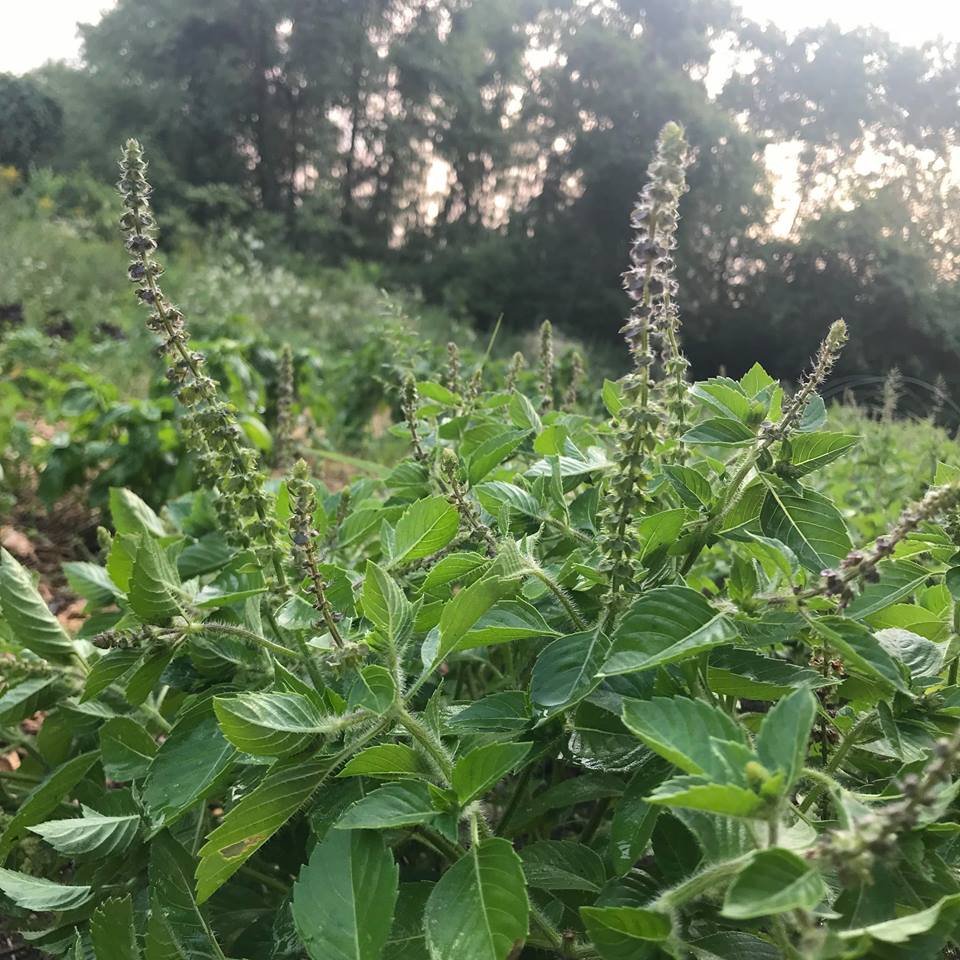Tulsi (Holy Basil)
Culinary Use, Storage, & Benefits
Herb Profile: Basil (Ocimum basilicum)
Description
Tulsi is also known as "Holy Basil". This wonderfully fragrant herb is hailed as sacred in India. It has fuzzy leaves and stems, and is harvested in full flower unlike the others that are harvested for maximum leaf production.
Read about other types of basil!
Nutrition
Basil is a warming, drying herb that supports the kidneys, liver, stomach, spleen, and large intestines. High in antioxidants, it also can help calm the nerves and relieve tension as well as support healthy metabolism and nutrient assimilation in the gut.
Storage
Tulsi and other types of basil are generally more fragile than most herbs. It does not tolerate being in the refrigerator! Instead, place it in a cup of water out of direct sunlight and use within a couple of days. Otherwise, you can dry it (use a dehydrator if you're drying Genovese type) or freeze it for later use.
Use
You can also use tulsi fresh, dry, or frozen!
Tulsi dries very easily, bunched with a rubber band and hung in a well-ventilated low-light area. The leaves can then be crumbled off the stems inside a paper bag, and used in cooking and tea.
Sources:
New Whole Foods Encyclopedia by Rebecca Wood
The Gift of Healing Herbs by Robin Rose Bennett
The Rodale Encyclopedia of Herbs
Asparagus to Zucchini by Fairshare Coalition
Our own experience!







